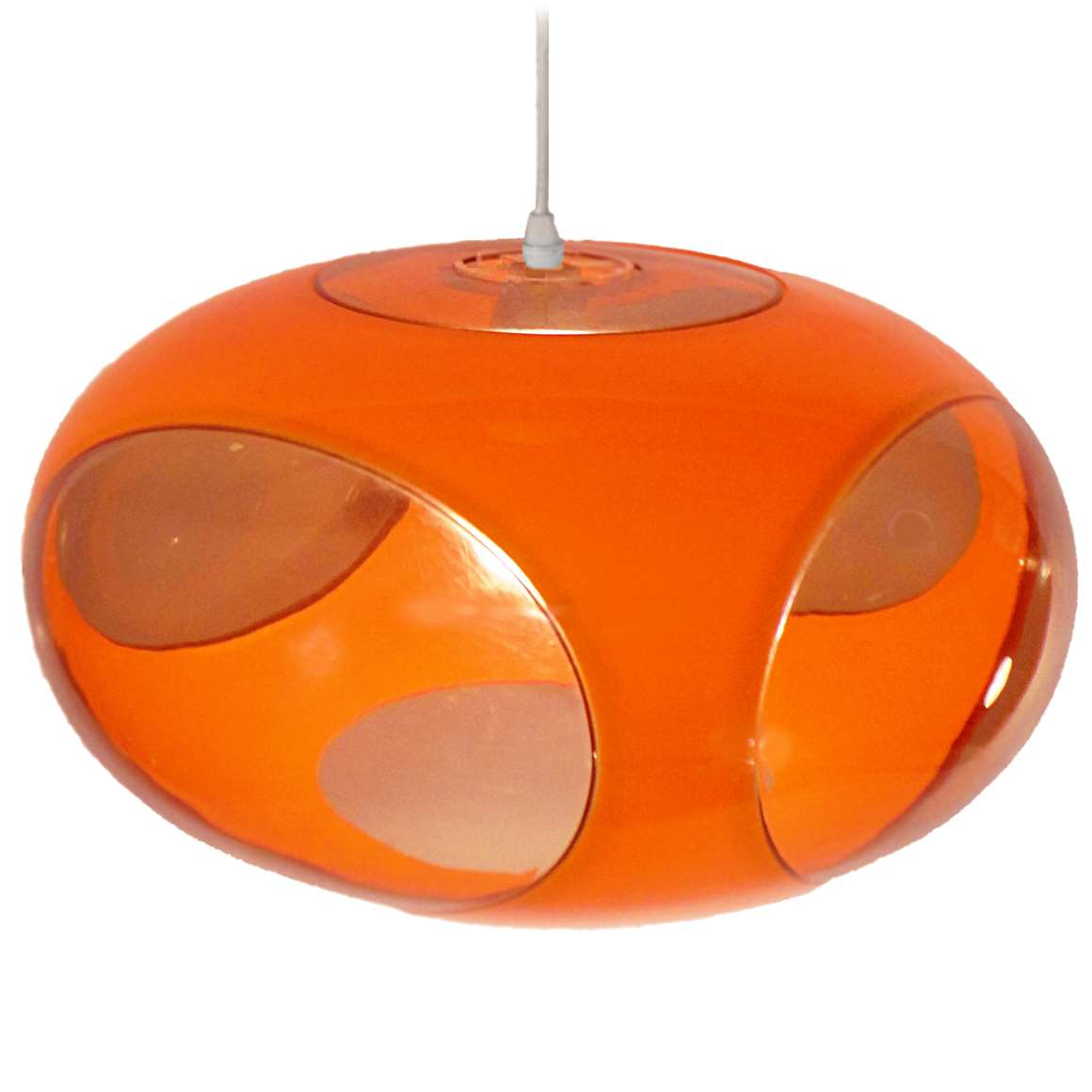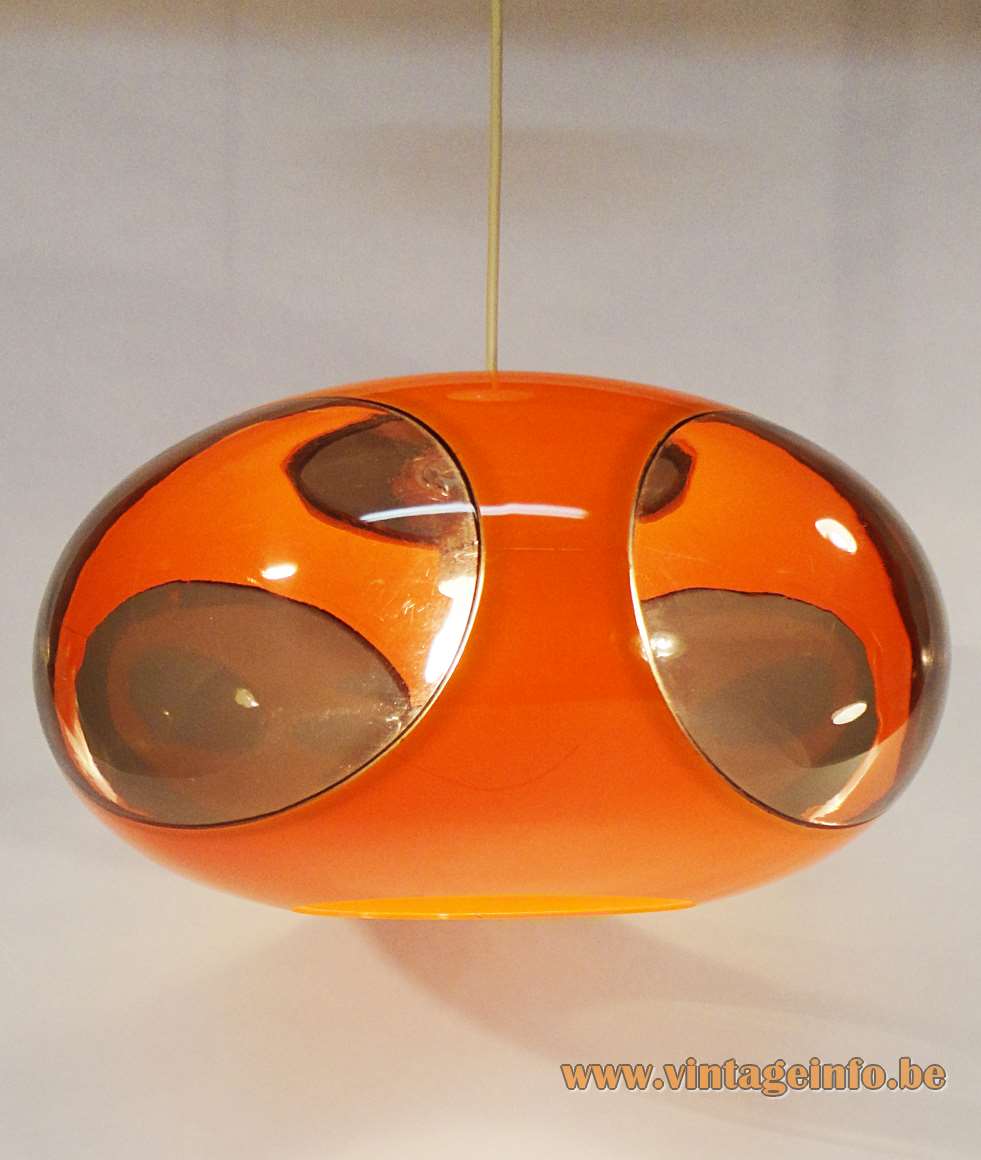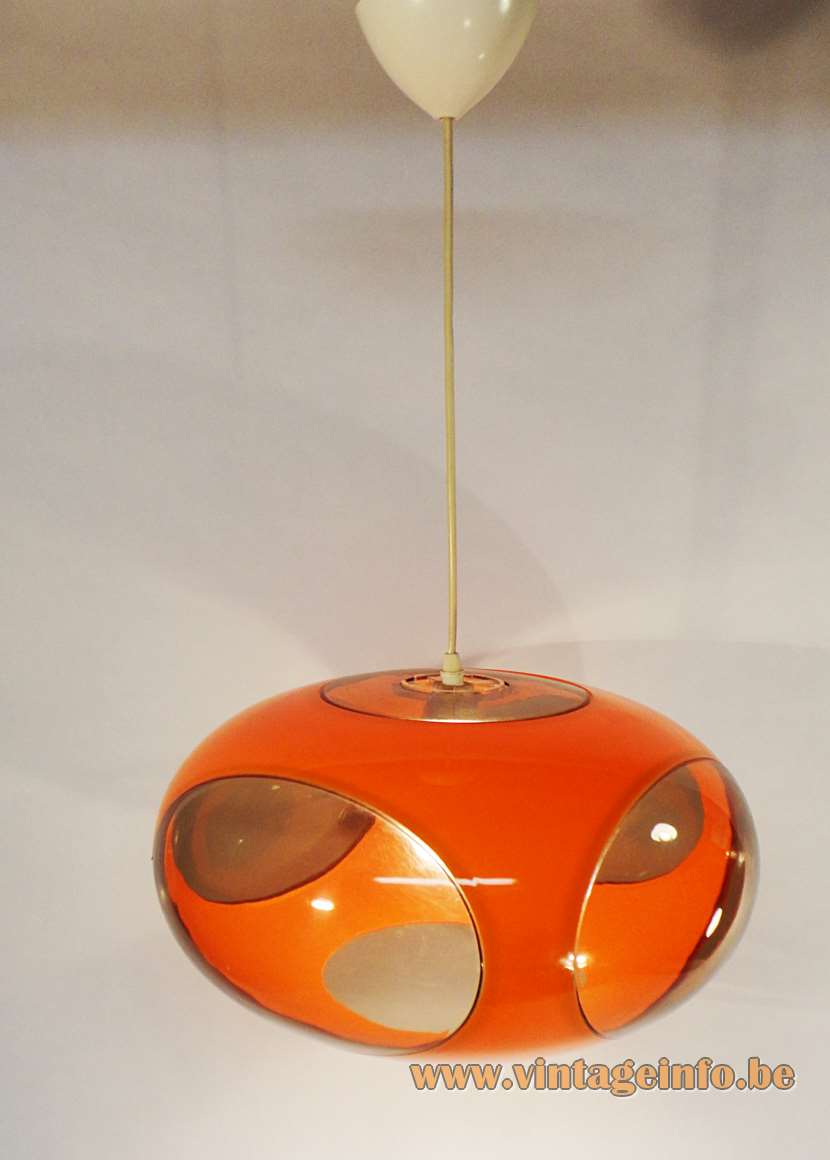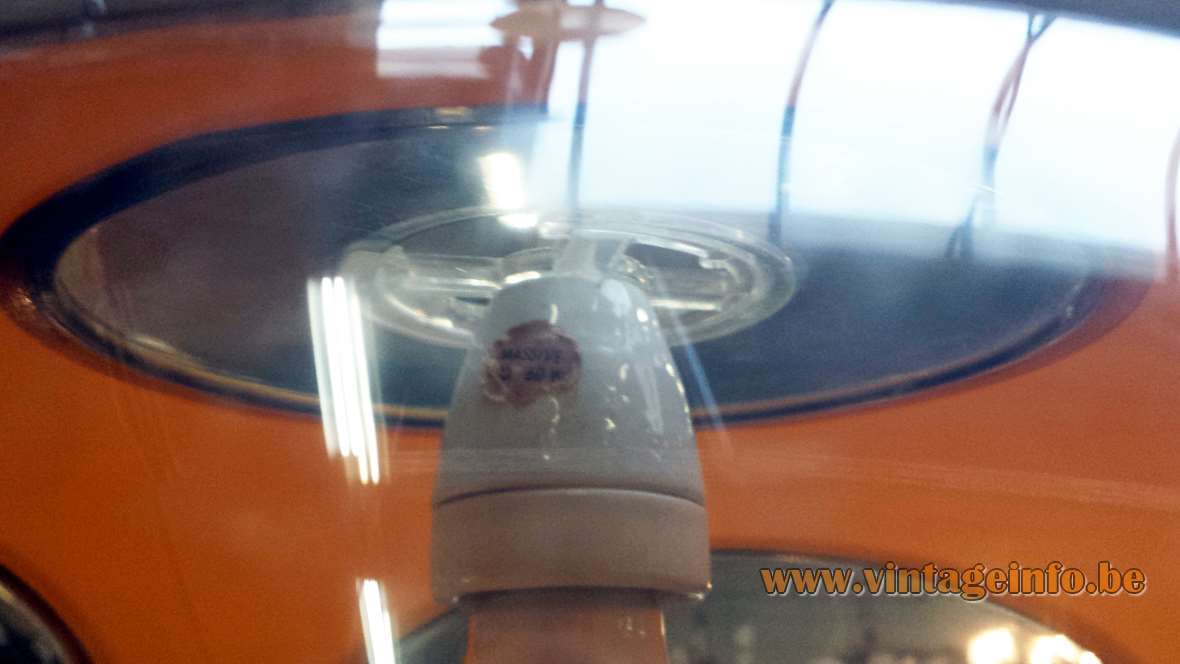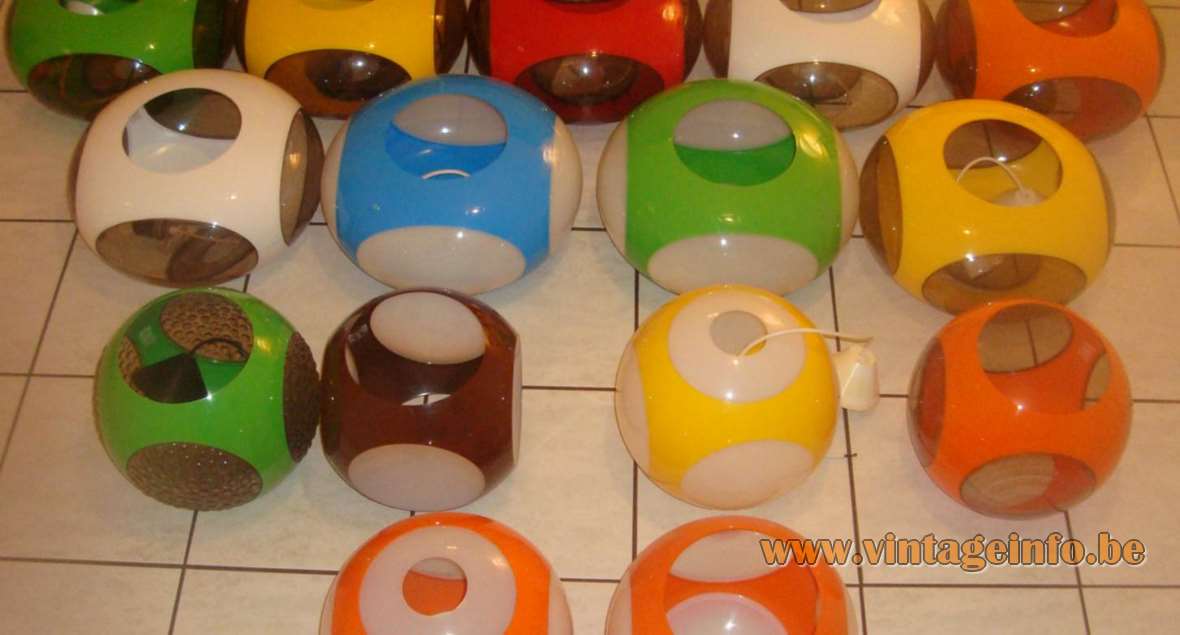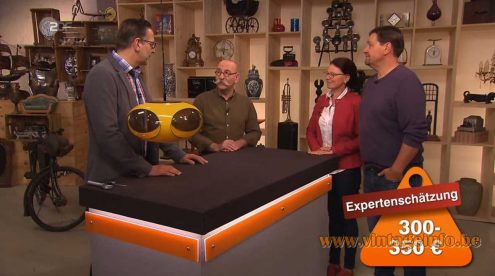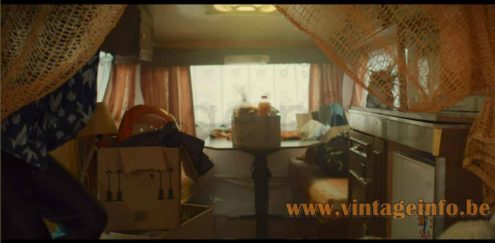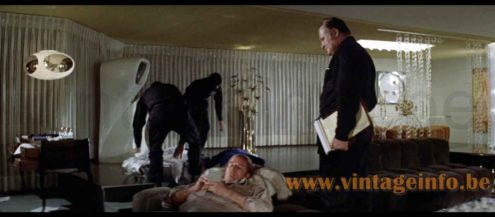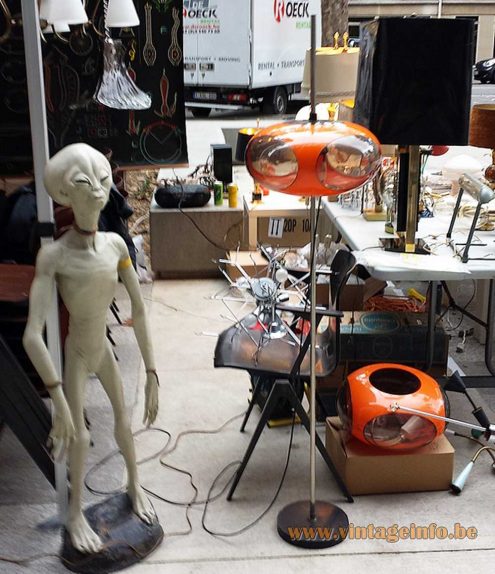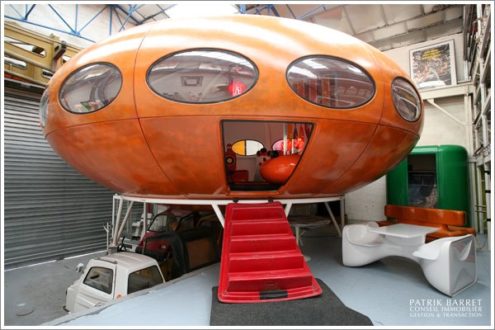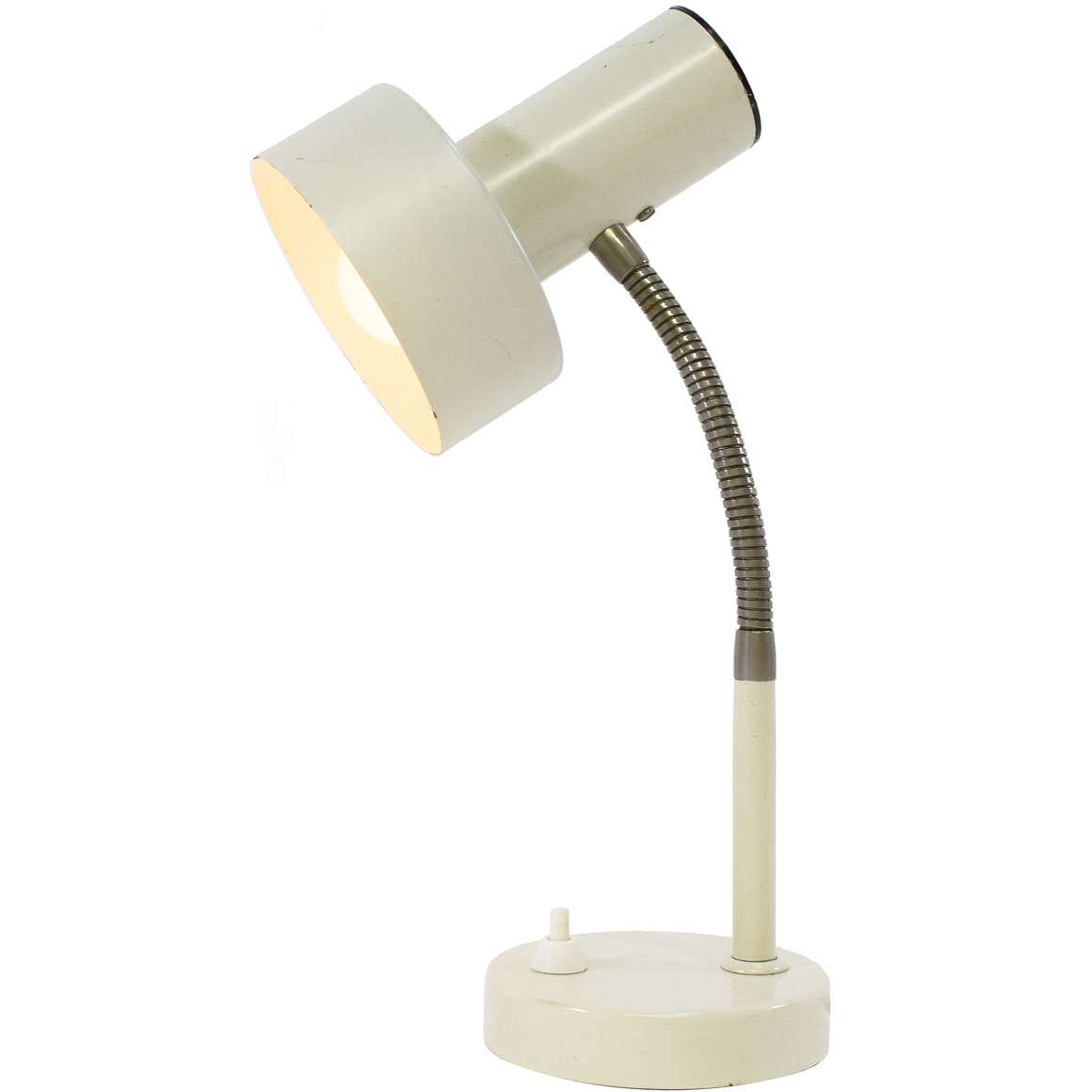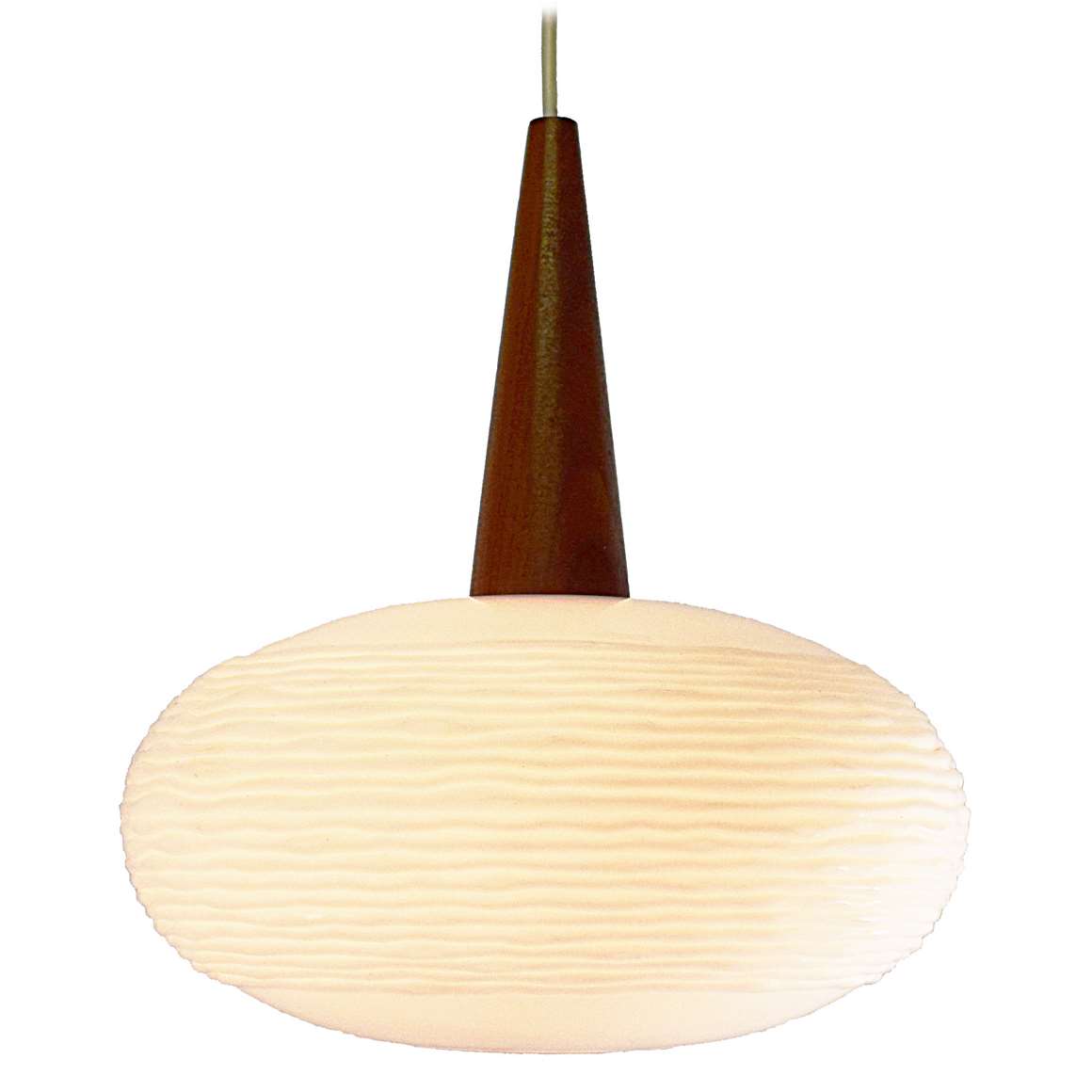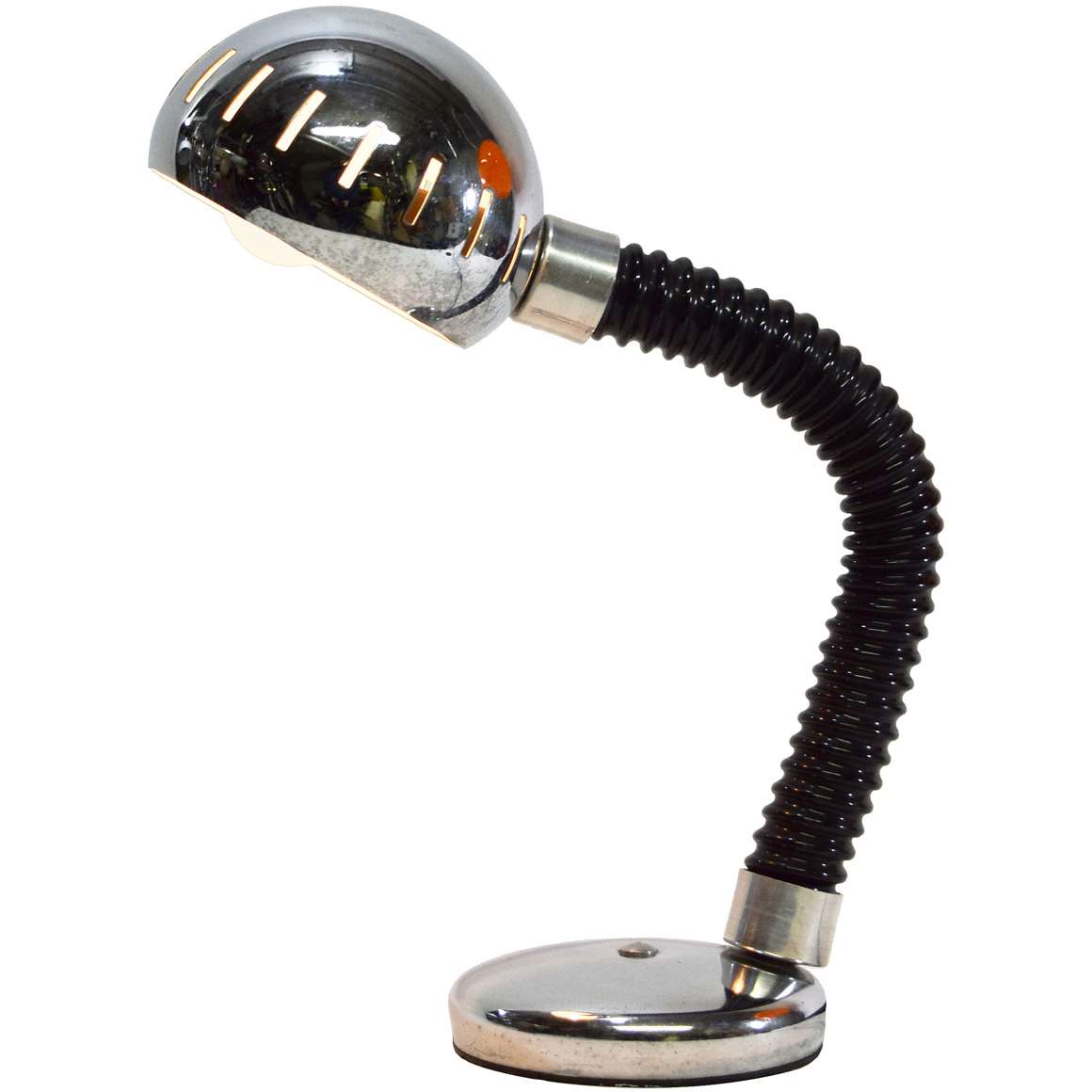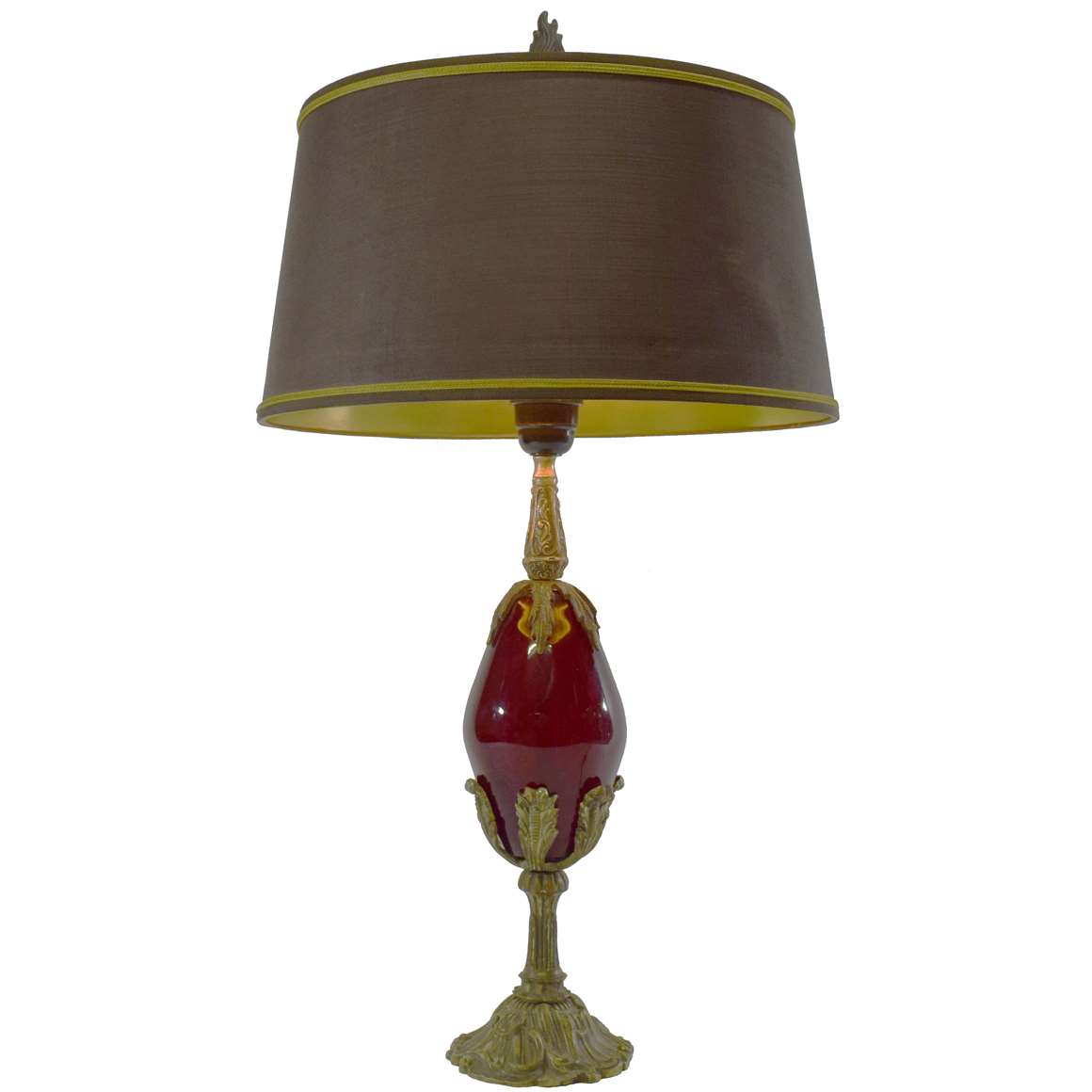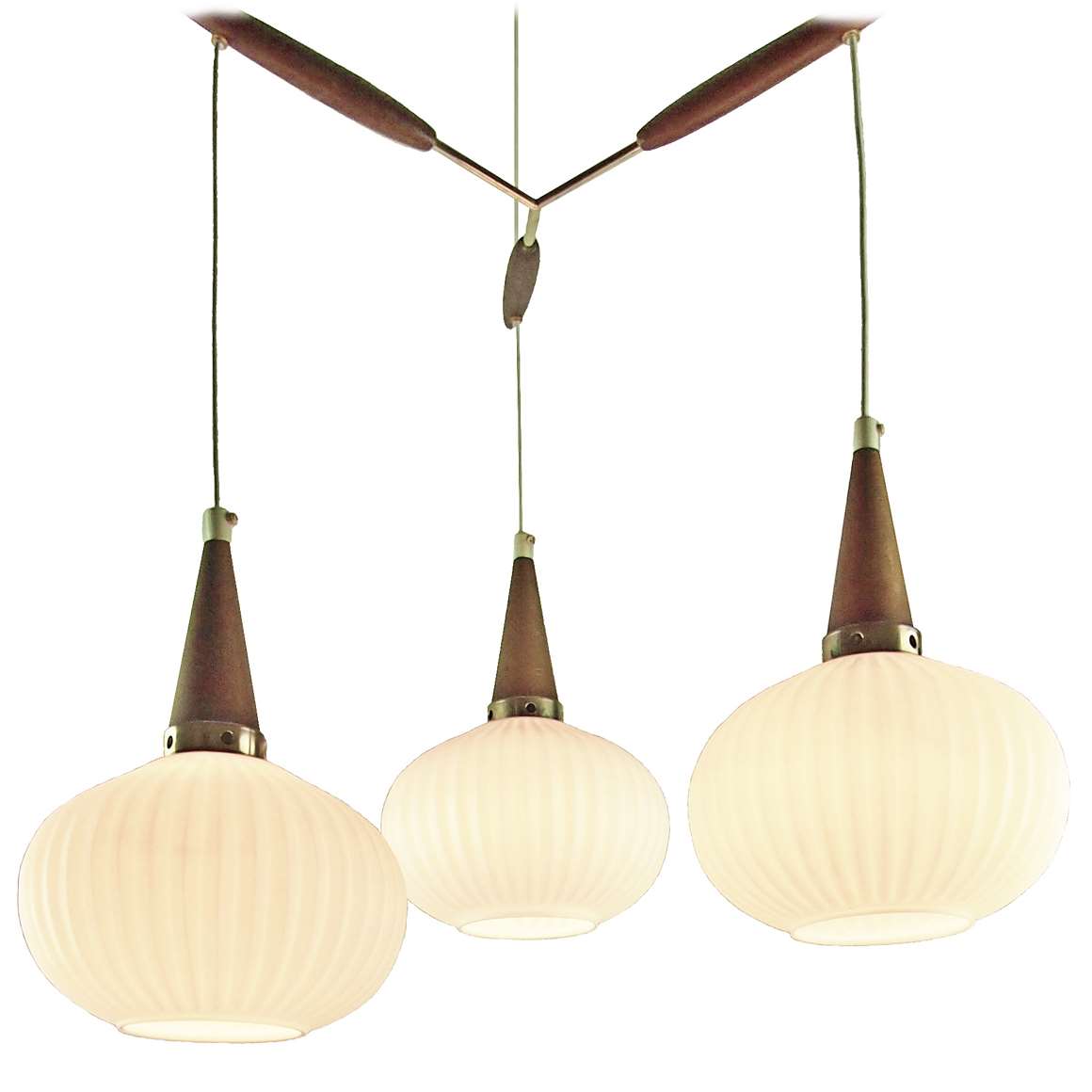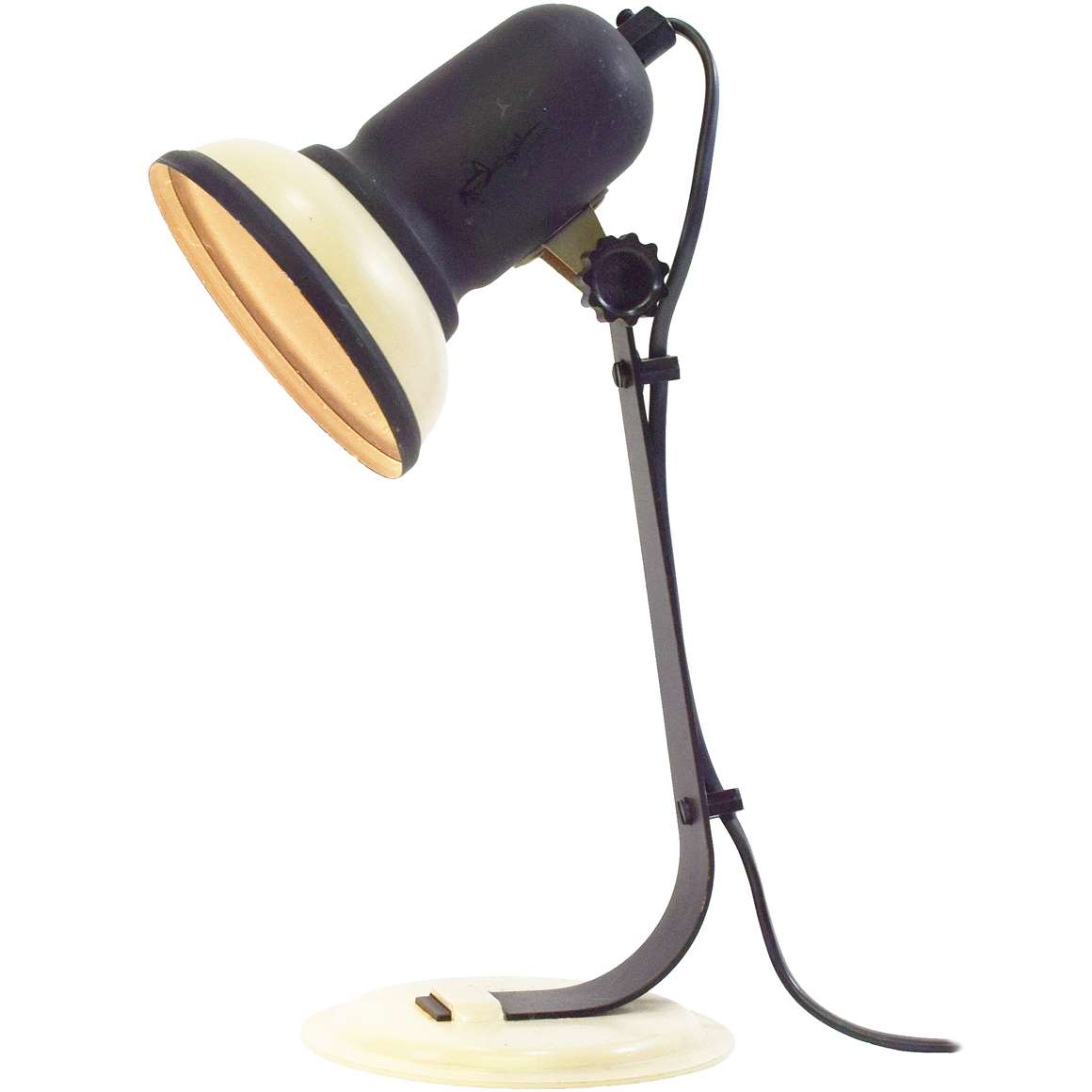Luigi Colani UFO Pendant Lamp – Collection
Bares für Rares
In the German ZDF TV show Bares für Rares with Horst Lichter from August 24, 2019 a yellow UFO pendant lamp was shown to the experts. The expert says it’s a lamp designed by Luigi Colani…
In Belgium you can find these lamps for +- 100 euros every day. Probably also in Germany. They were mass produced.
Sigh. This way, this fable never gets out of the world. “The objects presented are first commented by an expert, who also verifies their authenticity” That’s what they forgot to do, I presume… But it is only TV. It is not important if it is right.
Lamps In The Movies
Mr. Nobody (2009)
A yellow version of this UFO pendant lamp appears in the 2009 film Mr. Nobody. A science fiction drama film written and directed by Jaco Van Dormael. Starring Jared Leto, Sarah Polley and Diane Kruger. Many other lamps appear in this film.
Baraki (2021)
A round orange version of this UFO pendant lamp was used as a prop in the 2021 Belgian comedy TV series Baraki. Here in episode 6, series 1, in a moving box. Starring Pierre Nisse, Julien Vargas and Sophie Breyer.
Soylent Green (1973)
A very similar UFO pendant lamp was used as a prop in the 1973 American ecological dystopian thriller film Soylent Green. Starring Charlton Heston, Leigh Taylor-Young and Chuck Connors. This pendant lamp, maker unknown, is closed below and uses 3 or 4 light bulbs. Do you have an idea about the maker of this lamp? Please let us know through the contact form and help improve the websites exactitude.
Links (external links open in a new window)
The Massive company – Wikipedia (in Dutch)
La Maison Futoro – Patrik Barret – Facebook page
The complete history of the Philips company
More info about Luigi Colani lamps can be found here: LuigiColani.org
Official Luigi Colani website: colani.ch
BASF promotes exhibition of industrial designer Luigi Colani
Soylent Green (1973) film – Wikipedia
Soylent Green (1973) film – IMDb
Luigi Colani Caparol elephant – Google Images
Commerzbank Drumbo elephant shop
Vintageinfo
Black & white more bug-eye style version
Many thanks to Patrik Barret for the use of the Futuru photo. And also many thanks to Dirk for the photo of the big collection.
Luigi Colani UFO Pendant Lamp
First of all, these pendant lamps are NOT a design by Luigi Colani.
Materials: Oval orange acrylic lampshade with 4 curved smoked acrylic “windows”. Porcelain E27 socket, later editions have a Bakelite socket.
Cord Length: 60 cm / 23.62’’
Height: 20 cm / 7.80”
Width: ∅ 40 cm / 15.74”
Electricity: 1 bulb E27, 1 x 60 watt maximum, 110/220 volt.
Any type of light bulb can be used, not a specific one preferred.
Period: 1960s, 1970s – Mid-Century Modern.
Designer: To be appraised.
Manufacturer:Massive, Mortsel, Kontich and Wommelgem, Belgium.
Other versions: This “Luigi Colani” UFO pendant lamp exists in several colours, models and forms. Also a version with a rise & fall mechanism exists, it has a handle below. They were produced for several years. You can find them with porcelain and Bakelite sockets. Sometimes a floor lamp appears. Often said that they are homemade, but it happens a little too regularly. This lamp is often named bug eye lamp.
Luigi Colani
Despite everyone says that this typical plastic age pendant lamp is designed by Luigi Colani, it is not. It is a pendant lamp made by the Belgian brand Massive. The label is often missing. It was made of paper and after all those years, most of them fell away and were lost.
How the story got into the world is just guesswork, but in the late 1990s there were only a few websites with vintage lamps and a dealer based at the Kloosterstraat in Antwerp, Belgium advertised this lamp as Colani.
In fact this lamp has nothing to do with Luigi Colani whatsoever as confirmed by the owner of the Colani website. Also, this lamp is not mentioned in any catalogue about Colani.
In some pendant lamps the sticker of the Massive company is still present. Often removed to make it more “Colani”. Massive has always had the reputation of being cheap and junk in the Benelux.
This UFO pendant lamp has some similarities with the truck Colani designed. But probably the design was “inspired” by the Futuro house Finnish architect Matti Suuronen created in 1968.
Drumbo
Another Colani hoax is the plastic Drumbo elephant. It is a design by Bernd Diefenbach from 1972 for Munich-based design agency Design Institut GmbHcommissioned by the German Dresdner Bank, today named Commerzbank. The elephants are for sale on their website.
In 2014 Luigi Colani himself denied that he designed it in an interview with a Japanese website.Luigi Colani however designed an elephant for Caparol, a paint company. It is a black elephant with colourful stripes, designed in 1984.
Other companies that sold lamps of these series
In The Netherlands these UFO lamps were also sold by Steinhauer Lighting. IKEA sold similar models. IKEA was only active in Sweden, Norway, Switzerland and Germany at that time.
Acrylic: often named by its commercial name: Perspex, Plexiglas, Crylux, Acrylite, Lucite, is a thermoplastic. This type of plastic is sometimes called acrylic glass.
Massive
Origins and Early Growth (1926–1970s)
Massive started in 1926, when Pieter-Jozef De Jaeck founded a bronze foundry in Wilrijk, near Antwerp, Belgium. Initially, the company crafted traditional bronze items such as candlesticks, crucifixes, and chandeliers in-house using established casting methods.
However, as the market evolved during the 1930s and 1940s, Massive quickly adapted to meet changing consumer needs. Therefore, the company gradually introduced more functional lighting products for households. After World War II, electric lighting became more popular across Europe.
Consequently, Massive began combining classic design with modern electrical technology. This strategic shift enabled the brand to reach new customers and grow steadily.
By the 1950s, Massive had earned a solid reputation across Belgium. Its lighting fixtures – often inspired by mid-century trends – were both affordable and practical. Moreover, they were widely available in hardware and furniture stores. As a result, they became a staple in many homes.
In the 1960s, Eddy De Jaeck, the founder’s son, joined the company. He introduced semi-industrial production techniques and optimized logistics. As a result, Massive shifted from a craft-based workshop to a mass production business. This major change laid the groundwork for international expansion.
Design Approach and Product Strategy
Massive became known for producing lighting in the style of more exclusive brands. While they didn’t make direct copies, many of their designs were clearly “inspired” by well-known models. Nevertheless, the company also released some original highlights that stood out in their own right.
In addition to their own production, Massive distributed a significant number of lamps made by other manufacturers. This strategy was not unusual at the time. Many lighting companies across Europe followed the same practice to broaden their product range and appeal to a wider market.
International Expansion and Market Leadership (1970s–2000s)
During the 1970s, Massive expanded rapidly. With Eddy De Jaeck at the helm, and later his sons Piet and Jan De Jaeck, the company grew into a multinational enterprise. To stay affordable and increase volume, Massive moved production to Eastern Europe. Later, it extended manufacturing to China. This deliberate strategy helped the brand stay competitive in a changing market.
By the 1980s, Massive had become one of the top lighting brands in Europe. Its catalog included thousands of options for both indoor and outdoor use. Furthermore, the brand balanced style, affordability, and reliability. Because of this, it gained popularity in both Western and Eastern Europe.
In the Netherlands, Massive began operations in 1962. In addition, the company opened Massive Gorinchem in 1969. This location served as the Dutch headquarters for more than 40 years. Eventually, in late 2012, it relocated to Eindhoven.
Ownership Changes and the Philips Takeover (2002–2010)
In 2002, the De Jaeck family sold Massive to CVC Capital Partners for about €250 million. This move transformed the company into part of the new group, Partners in Lighting International (PLI).
Over the next years, PLI expanded quickly. For example, in 2005, the group acquired Modular Lighting Instruments. Then, in 2006, it added Trio Leuchten from Germany. As a result, PLI marketed over 10,000 products under brands like Massive, Lirio, Trio, Aqua, and Cucina.
The company grew further by employing about 5,000 people and operating in more than 70 countries. In 2007, Royal Philips Electronics announced plans to acquire PLI. The deal closed in 2008, which strengthened Philips ‘ position in the European home lighting market.
Soon afterward, Philips rebranded all Massive stores in Belgium as Light Gallery. By 2014, the Massive name had vanished from packaging and store displays alike.
The End of an Era and the Move to Signify (2010–2024)
After the acquisition, Massive ‘s visibility declined steadily. In 2016, Philips Lighting became a separate, publicly traded company. Then, in 2018, the company rebranded as Signify. This new identity marked a fresh focus on smart and connected lighting.
Eventually, in April 2024, Signify shut down the Light Gallery website and redirected all content to its main platform. Although the Massive name no longer appears in stores, its legacy lives on. Millions of homes throughout Europe still feature its recognizable and timeless lighting designs.
Massive label on the porcelain socket
UFO Floor Lamp
A rare seen UFO floor lamp (together with the pilot;)). Spotted in 2015 at a design fair in Paris, France. Often said that these floor lamps are home-made, but I have seen to many of them in the last 20 years, all made the same way and all with 2 light bulbs.
Luigi Colani
Professor Luigi Colani, born in Berlin in 1928, is among the pioneers of industrial product design. Since the 1950s, he has been merging aesthetics in creating the articles of daily use that he makes out of plastic. Plastics has made a major contribution to implementing design ideas in cost-efficient mass production. The prime characteristic of Colani’s design are the rounded, organic forms (“bio-morph design”). Luigi Colani died 16 September 2019, he was 91 years old.
